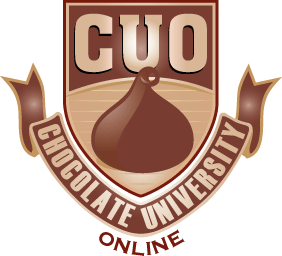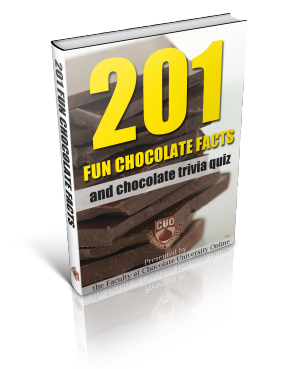Crushing and winnowing cacao for chocolate making in Chiapas, Mexico

Chocolate is always interesting. It makes life better! That’s why a lot of us are curious about how it’s done. Are you one of them? Watch this video as it shows crushing and winnowing of chocolate, which is the actual removing of the papery shell of the cacao bean.
Video Rating: 0 / 5
Making Fabulous Favors Using Chocolate

Chocolate is a favorite to many, children and adults alike. I know a lot of people can back me up on this. It’s just something that knows how to work its magic anytime, anywhere.
In this video, Christina Crawford shows you how to make great wedding invitations, favors, save the date cards and thank you notes.
Categories: chocolate videos Tags: CHOCOLATE, Christina Crawford, date, Fabulous, favorite, Favors, knows, making, Using
Organic Chocolates
Organic chocolate was deemed unsuitable before, but it doesn’t hold true any longer. More and more people involved in the chocolate-making industry are getting their growers in tropical climes to grow organic cacao. They are derived from the tropical cacao tree, no synthetic pesticides, herbicides or fertilizers are used in growing them.
Fair trade practices aids in making sure that the workers are paid a living wage, work in safer conditions, and can access health care, education and other important opportunities even though they aren’t necessarily eco-friendly.
The taste of organic dark chocolate is described by chocolovers as a near-transcendent experience. Anyone who has a take on it?
You can go for organic chocolate when you want to give something to a chocoholic friend, while at it, you get to help Mother Earth, as well.
Chocolate has been a star in the human palate and heart ever since it was discovered. It started from being one of the most cherished foods on the planet, now it takes the limelight of being the most studied. Scientists claim that there are several health benefits of chocolates. The chocolates also contain many chemicals that act in a pleasant way on the moods of those who get to eat it.
But of course, there are several negative impacts that come with chocolates. Surprise, surprise. Chocolate is packed with sugar, especially when you don’t opt for the dark type. To make it yummy and low in carbs, it takes some ingenuity but it can be surely done.
Studies of today also display how good chocolate is for the heart. Studies indicate that chocolate can improve blood vessel responsiveness blood pressure, and cholesterol. For improving glucose tolerance other studies have shown it has potential, which is significant to people who are using low-carb diets to lessen blood glucose spikes.
Categories: chocolate articles Tags: Chocolates, dark chocolate, friend, making, Organic, organic chocolate, people, takes
Making Home-made Chocolates
The process is actually similar to roasting coffee beans, however with gentler requirements. You need to roast them for 5-35 minutes at temperatures between 120-160 degrees C. What you should do first is expose the beans to a high temperature, and then lower the temperature eventually. Then, stop roasting when you have observed that the beans are starting to crack
After roasting them, crack using a hammer and get rid of the husks by hand if you work with a small batch. And for larger batch you may utilize a very coarse, Corona type mill when cracking the beans into nibs. Stir the nibs in a gentle manner using your hands or a spoon to winnow the nibs while you blow on them using a hair dryer up to the point where the husks are blown away.
You will be needing something strong enough in order to liquefy the nibs and separate the remaining husks. General food processors and majority of the juicers won’t do. A lot of individuals making chocolate at home are successful with the Champion Juicer. Feed the nibs in a lenient manner into the juicer one handful at a time. Otherwise, the motor might overheat. Cocoa liqueur will be coming out of the screen, with the mixture of husks and liqueur through the spout. Feed mixture through the juicer only until husk is coming out of the spout.
Conch and refine could be done at the same time with the use of a powerful wet grinder. Conch and refining rely upon the equipment that is utilized.
Tempering is practically the hardest part of making a chocolate. It guarantees you that your chocolate comes out to be shiny with a snap to it instead of being matte and soft that would melt in your hand. You have to take care that no moisture enters your chocolate. If moisture enters your chocolate it will ruin it. For that you can buy a tempering machine online.
Lastly, you mold the chocolate while it is still liquid. Gently pour it into the molds, making sure it won’t get spilled. You can pour them using a big syringe in the mould. You have the freedom to freeze, refrigerate, or let them harden at room temperature. Remove them after they have hardened into the mold. They must have a glossy appearance and must snap cleanly.
Categories: chocolate articles Tags: Chocolates, coming, feed, Homemade Chocolates, making, roasting, Tempering
Lollipops And How They Started
Lollipops are one of the best sweet treats, well loved by adults and children alike across the globe. They come in an array of colors and flavors, usually fruit flavors, but chocolate-flavored ones are also very famous.
With a lot of companies cutthroat in producing and distribute lollipops, such treat has become available in many different shapes, as well. There are small ones that can be purchased in bulk and serve as mini gifts, and then there are large ones that are made with candy canes twisted into a circle. We know them very well!
The recorded largest lollipop was made and then certified on the June 25, 2002. It has a weight of 4,031 pounds (stick included), 18.9 inches thick, and over 15 feet tall. It’s almost a rip-off of a giraffe! It came in cherry flavor and was the “talk of the world” at the time.
The word lollipop has been colloquially used in many different pop songs like the “Lollipop Guild” , and it was featured in the the movie “The Wizard of Oz,” the “Lollipop” of Chordettes, and “The Good Ship Lollipop” from the 1934 Shirley Temple movie, ”Bright Eyes”.
In America, July 20th is considered to be National Lollipop Day. Many lollipops can be eaten at room temperature, but some lollipops are made to be ice lollipops. These are water-based and frozen.
The first ever lollipop making machine recorded in history was only able to make 40 lollipops in a minute. With such pace, it would take a total of 592 days just to keep up with the needs of people scattered from Sugar Hill, Georgia to Sugar City, Idaho. Today, the fastest lollipop making machine can make 5,900 lollipops a minute. Yup!
The idea of having a candy on stick paved way for the creation of the lollipop. This continues to be the reason why it was invented and reinvented over time.
Categories: chocolate articles Tags: chocolate lollipop, colors, fruit, history of lollipop, Lollipop, making, minute
The Difference Between Dutch-process and Natural Cocoa Powder
Dutch-process cocoa powder is actually derived from cacao beans that have undergone washing with a potassium solution. This is in order to neutralize their acidity. Natural cocoa powder is made out of cocoa beans that have simply undergone roasting, and then got pulverized into fine powder.
Apart from having the acidity neutralized, Dutching cocoa powder will actually make it darker and it tends to mellow the beans’ flavor. Many of the artisan manufacturers you will find in American don’t Dutch-process the cocoa that they have. They claim that their beans need not be acid-neutralized. Majority of supermarket brands of cocoa powder you can find in the United States, like Nestlé and Hershey’s, are natural cocoa powders.
Given than natural cocoa powder has not undergone tempering of acidity, it typically goes hand in hand with baking soda (which is alkali) in recipes. Chocolate makers typically mix Dutch-process cocoa with baking powder, since it does not react to baking soda like natural cocoa does. A lot of classic American recipes, such as Devil’s Food Cake, make use of natural cocoa powder. The reddish crumb in this recipe is the reaction between baking soda and natural cocoa powder.
But of course, there are exceptions to each. According to Fine Cooking magazine, “You can substitute natural cocoa powder for Dutch-process in most recipes (though not vice versa). Flavor and texture can be affected, but generally only in recipes calling for 3/4 cup (75 g) or more.”
You must know that you can’t use Dutch-process cocoa when a recipe specifically requires natural cocoa powder. When making ice creams and sauces, though, they can be swapped out. However, it cannot be applied when making cookies and cakes.
If a recipe requires either, the main difference that you will see is that Dutch-process cocoa yields a darker color and a more complex flavor , while natural cocoa powder is fruitier tasting and lighter in color.
Categories: chocolate articles Tags: cocoa, cocoa powder, find, making
Making Straw Chocolate Creations

Here’s a video of a chocolate chef making “straw chocolate.” Put a pan in the freezer to get it ice cold. Take the pan out, lay it flat, and quickly drizzle the chocolate over the top.
When you’ve drizzled enough chocolate, scrape with spatula to release. Bundled it up and use as desired.
(The chocolate should not be tempered. Tempered chocolate would likely break when handled this way. Untempered chocolate will bend allowing you to form into your creations.)
Take a look at the video to see how easy this is.
Categories: chocolate videos Tags: CHOCOLATE, making, Straw




